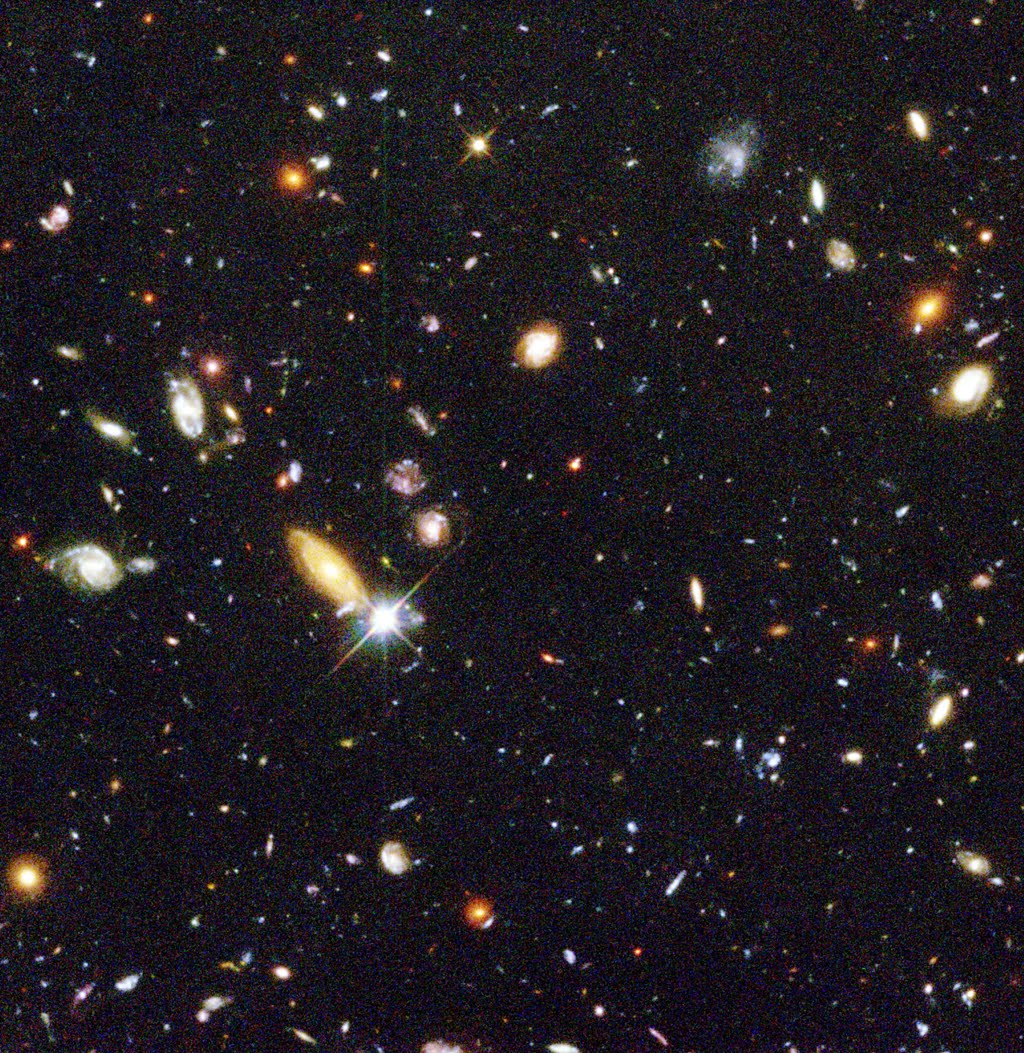First, the Cantor Set:

Other Famous Examples of Self-Similarity/Fractals
Mandelbrot Set

Mandelbrot Set's Correspondence with Logistic Map

Sierpinski Triangle

This site has a cool visualization:
http://serendip.brynmawr.edu/playground/sierpinski.html
Sierpinski Carpet

Menger Sponge

& Mengerubik Cubesponge
http://forgetomori.com/2009/science/mengerubik-cubesponge/
Dragon Curve

Peano Curve

Julia Set (of sin(z)...there are Julia sets of many functions)

Koch Snowflake

Koch Curve Self-Similarity

Brownian Tree (crystal growth)

Brownian Motion

Lichtenberg Figures and Lightning


(notice how it seems to choose one pathway after branching out - very interesting)
Ferns (real and fractal generated)


Trees Too?
http://www.gskinner.com/blog/assets/InteractiveElm.html
http://www.webcalc.net/calc/0467.php
Artistic Representation of a Brain as Fractal

Benoit Mandelbrot: Fractals and the art of roughness
Ron Eglash on African Fractals (from TED.com)
Another vid (visit the link):
PBS NOVA - Hunting the Hidden Dimension
- Watch more Videos at Vodpod.
Types of Strange Attractors
Lorenz Attractor

http://brain.cc.kogakuin.ac.jp/~kanamaru/Chaos/e/Lorenz/
http://local.wasp.uwa.edu.au/~pbourke/fractals/lorenz/lorenz.m4v
http://crossgroup.caltech.edu/chaos_new/Lorenz.html
Julia Attractor (really cool!)
http://www.openprocessing.org/visuals/?visualID=8058
Rossler Attractor

Tamari Attractor

Henon Attractor

Also look up: flow, Poincare mapping, bifurcations, catastrophe theory, self-organization
Fluid dynamics has also found much of chaos theory to be of use, especially in studies of turbulence, which I still consider to be unsolved.
A Karmen Vortex Street

Learn More
http://brain.cc.kogakuin.ac.jp/~kanamaru/Chaos/e/
http://www.hypertextbook.com/chaos/
http://www.stsci.edu/~lbradley/seminar/index.html
http://www.scholarpedia.org/article/Chaos
http://www.calresco.org/ - a link of links
http://math.rice.edu/~lanius/frac/
http://www.imho.com/grae/chaos/chaos.html
http://www.societyforchaostheory.org/
http://www.exploratorium.edu/complexity/CompLexicon.html
http://www.csuohio.edu/sciences/dept/physics_from_www/kaufman/yurkon/chaos.html
http://classes.yale.edu/fractals/
http://www.egregium.us/
http://www.theory.org/
About Fractals and Fractal Art Specifically:
http://www.chaospro.de/
http://local.wasp.uwa.edu.au/~pbourke/fractals/
http://content.techrepublic.com.com/2346-10877_11-56937-1.html?tag=content;leftCol
http://www.enchgallery.com/
http://mitpress.mit.edu/books/FLAOH/cbnhtml/slides.html
More Intricate Articles and Research:
http://physics.mercer.edu/petepag/combow.html
http://www.zfm.ethz.ch/~leine/toys.htm
http://vigo.ime.unicamp.br/2p/PendulaProject.html
http://www.math.bme.hu/~bnc/wada/
http://www.matternews.com/research/Researchers_move_closer_to_understanding_chaotic_motion_of_a_solid_body_in_a_fluid.asp
http://www.osti.gov/accomplishments/prigogine.html
College Web Pages
http://www.santafe.edu/
http://www.cscs.umich.edu/
http://wwwrsphysse.anu.edu.au/nonlinear/
http://www-chaos.umd.edu/
Complexity in Social Science
http://www.irit.fr/COSI/
Catastrophe Theory
http://en.wikipedia.org/wiki/Catastrophe_theory
http://l.d.v.dujardin.pagesperso-orange.fr/ct/eng_index.html
Most Links I have found on this subject are incorrect, misleading, incorrect interpretations, disconnected, or spiritual. I utilized Lorenz's 'The Essence of Chaos', Gleick's 'Chaos: Making a New Science', and Schroeder's 'Fractals, Chaos, Power Laws: Minutes from an Infinite Paradise' as references for my own writings. I didn't intend to copy anything directly, but I apologize if I did. Some of it may be due to the fact that sometimes things can't be said precisely without copying. I don't claim to have come up with any of the actual ideas expressed in either part of this post. There was just so much cool stuff out there on this subject I could hardly get myself to finish this article! Please check out the links and explore this more. I think chaos theory will yield very interesting physics research in years to come. I took many videos and pictures from all over the web. If I am violating any copyright laws or anything of the sort, please let me know and I will remove whatever is necessary. Also, if anybody finds incorrect statements with particular things which have been said, please let me know as I have tried very hard to express these concepts accurately.

No comments:
Post a Comment